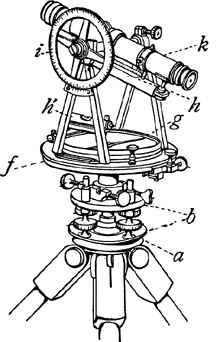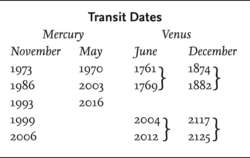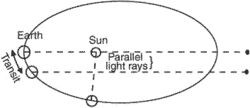transit
transit
(tran -zit, -sit)Transit
(religion, spiritualism, and occult)Transit, from the Latin trans, meaning “across,” “beyond,” or “over” plus ire, meaning “go,” has two related astrological meanings. The first simply identifies planets that are moving across the sky, in contrast to planets positioned in a birth chart (or in other kinds of horoscopes). For example, a given individual’s natal Mercury (Mercury’s position at birth) is at 25° Aquarius, whereas transiting Mercury is moving through the early degrees of Sagittarius. One can also talk about a planet’s transit (movement) through a given sign or house.
The second meaning of transit refers to a method of predicting conditions on the basis of the interaction between transiting planets and one’s natal chart (birth chart). Secondary progressions, the other method of prognostication most in use among contemporary astrologers, entails finding a person’s age—say, 40 years—and moving the planets and house cusps of the natal chart to the positions they occupied the same number of days after birth as the individual’s age in years, in this case, 40 days. An oversimplified but nevertheless useful generalization is that transits indicate external conditions, whereas progressions indicate inner development (in the sense of changes in one’s personality). Thus, transits are used to predict future environments, and progressions are used to predict inner changes. For readings, astrologers often erect a chart that has three concentric circles; the inner circle contains the natal chart, the intermediate circle contains what is referred to as the progressed chart, and the outer circle records the positions of the transiting planets for the time of the reading. This tripartite chart allows the astrologer to view the interactions between the various levels at a glance.
The transiting planets exert generic influences that affect everybody. Thus, the period during which Mercury (which is associated with communication and concrete thinking) is retrograde (appears to move backward in its orbit), for example, is not a good time for anyone to sign contracts. However, when astrologers discuss transits, they usually have in mind the interaction between the planets currently moving through the heavens and the planets in a particular person’s natal chart. A natal chart is a bit like a two-way template that shows how a person views the universe as well as how the universe affects the individual. The positions that the planets occupied at the person’s birth, in other words, remain sensitive spots that respond to the transiting celestial bodies making aspects to them. Say, for example, that an individual’s natal Mercury (the position Mercury occupied at birth) is 10° in the sign Capricorn. Furthermore, transiting Neptune (a planet that is associated with, among many other things, delusion and foggy thinking) is moving over the person’s Mercury, while simultaneously making inharmonious aspects with other planets. For the period this transit is in effect, this individual should refrain from signing contracts. In this situation, unlike the case of retrograde Mercury, the advice is particularized for one person rather than for everybody.
The transiting planets also affect a person according to the house through which they are moving. Thus, for example, a transit of Jupiter (which embodies the principle of expansion and good luck) through the tenth house (career and public standing) would be, unless other transits dictate the contrary, a good period for a businessperson to undertake a business expansion. The length of time a transit has an effect varies according to the relative speed of the planet. Jupiter, for example, usually takes about a year to cross through an average-sized house, giving the hypothetical businessperson in this example a year to take advantage of Jupiter’s transit through her or his tenth house. By way of contrast, the Moon transits a house in 2 or 3 days, whereas Pluto takes 15 years.
Sources:
transit
[′trans·ət]transit

transit
ii. The apparent passage of a celestial body across the face of another.
iii. A condition in which an observer and two objects on the earth's surface are in one line.
iv. The passage of an aircraft through controlled airspace.
v. The act or process of passing from over or across a place, or from one place to another, as in “the airplane is in transit.”
vi. An instrument used to accurately survey an area or align aircraft during a rigging process.

